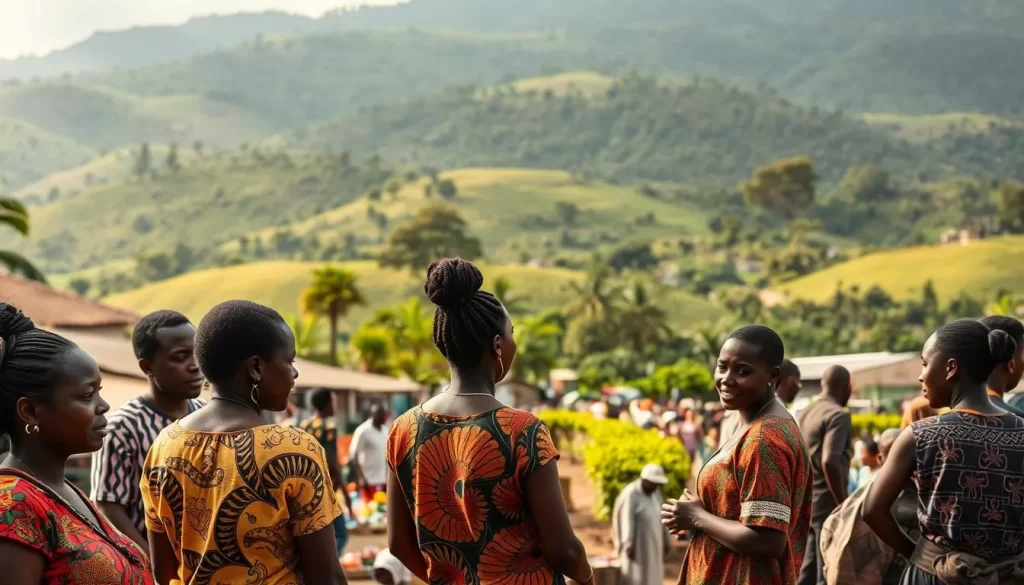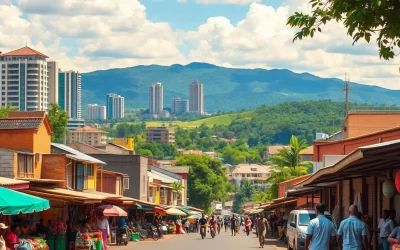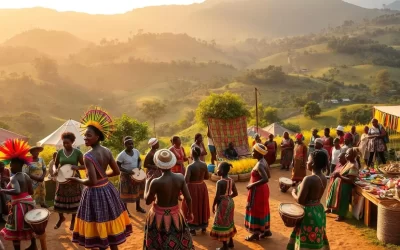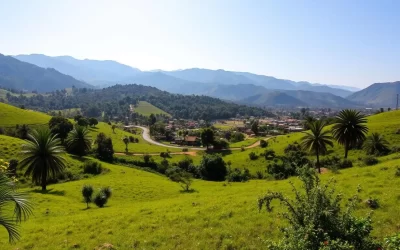✓ Tours & Activities ✓ Tours & Activities
Welcome to a journey through the vibrant linguistic landscape of Rwanda, a small yet dynamic East African country. Here, language is more than just a means of communication—it’s a cornerstone of culture, education, and national identity.
Kinyarwanda, the first language of nearly the entire population, is spoken by approximately 93% of Rwandans. Alongside it, French, English, and Swahili hold official language status, reflecting the nation’s rich history and global connections.
Over the years, shifts in language used have been shaped by colonial influences and post-genocide policies. For instance, English became a medium of education in 2008, while Swahili gained official recognition in 2017 to foster regional trade.
As you explore this article, you’ll discover how these languages shape Rwanda’s identity and its interactions on the global stage. Let’s dive in!
Exploring Rwanda’s Language History and Cultural Heritage
The story of Rwanda’s linguistic evolution is deeply rooted in its cultural and historical journey. From its pre-colonial beginnings to the colonial era, language has played a pivotal role in shaping the nation’s identity.
Pre-colonial Roots and the Emergence of Kinyarwanda
Kinyarwanda, the language spoken by nearly 93% of the population, has its origins in the 15th century. It served as a unifying force among the Hutu, Tutsi, and Twa ethnic groups, fostering a shared cultural identity. This close intergroup relationship helped solidify its use across the country.
Today, Kinyarwanda remains a cornerstone of Rwanda’s heritage. Its widespread adoption reflects the deep connections between language and community. This traditional language continues to influence modern practices and policies.

Colonial Influences and the Introduction of French
During the colonial period, Belgian rule brought significant changes to Rwanda’s linguistic landscape. French was introduced as the official language of administration and education. This shift marked a turning point in the language used at higher levels of governance.
The adoption of French also reflected the broader impact of colonial policies on the country. It created a unique blend of traditional and colonial language practices. These dynamics continue to shape Rwanda’s linguistic status today.
| Period | Language | Impact |
|---|---|---|
| Pre-colonial | Kinyarwanda | Unified ethnic groups, cultural identity |
| Colonial | French | Administration, education, governance |
Historical events, such as the genocide, further influenced language policies. These shifts highlight the resilience and adaptability of Rwanda’s linguistic heritage. As you delve deeper, you’ll see how these roots shape its modern language practices.
Rwanda: Official and widely spoken languages
From Kinyarwanda to Swahili, Rwanda’s languages shape its identity and future. Each language plays a distinct role in education, governance, and international business. Let’s explore how these languages contribute to the country’s dynamic landscape.
Understanding the Role of Kinyarwanda, French, and English
Kinyarwanda is the mother tongue of nearly 93% of the population, serving as a unifying force across communities. It’s deeply rooted in cultural traditions and remains central to daily life. French, once the primary language used in education and administration, has seen a decline in recent years.
English has gained prominence since its introduction as the medium of instruction in 2008. This shift reflects Rwanda’s strategic pivot to attract global investors and strengthen international ties. Today, English is widely used in government, media, and business.

The Rise of Swahili in Administration and Trade
Swahili’s status as an official language was formalized in 2017, primarily to enhance regional trade within the East African Community. While fewer than 1% of Rwandans speak it fluently, its use in administration and commerce is growing.
This adoption highlights Rwanda’s commitment to fostering regional cooperation. Swahili’s integration into public communication and governance underscores its evolving role in the country’s linguistic framework.
These shifts in language used reflect Rwanda’s adaptability and forward-thinking approach. They also illustrate how language shapes national identity and global engagement.
Modern Trends and Education in Rwanda’s Language Landscape
Rwanda’s approach to language education reflects its commitment to cultural preservation and global integration. By blending traditional practices with modern strategies, the country has created a unique framework that benefits both its citizens and its international partnerships.
Language Instruction and Literacy in Rwandan Schools
In Rwandan schools, language instruction is carefully structured to enhance learning outcomes. Early education is conducted in Kinyarwanda, ensuring students connect with their cultural roots. From the fourth year of primary school, English becomes the medium of instruction, aligning with East African community standards.
This dual-language approach not only improves literacy rates but also prepares students for global opportunities. By the time they graduate, they are proficient in both their native language and English, making them competitive in international markets.

Economic Benefits and International Communication
Rwanda’s multilingual policies have significant economic advantages. English proficiency facilitates international trade and attracts foreign investors. Meanwhile, Swahili’s growing use in administration strengthens regional ties.
These language choices also enhance local businesses. Entrepreneurs can communicate effectively with both domestic and international clients, boosting the country’s economic growth. For more insights on how language policies shape Rwanda’s development, explore this detailed analysis.
By prioritizing language education, Rwanda is creating a skilled workforce ready to thrive in a globalized world. This strategic focus not only empowers individuals but also elevates the nation’s status on the international stage.
Conclusion
Rwanda’s linguistic journey reflects a unique blend of tradition and modernity. From its pre-colonial roots to today, language has been a cornerstone of identity and progress. Kinyarwanda remains a unifying force, spoken by over 99% of the population, while English and Swahili enhance global and regional ties.
Historical events, like the genocide, have shaped language used in governance and education. The shift to English as the medium of instruction in 2008 highlights Rwanda’s adaptability. Swahili’s growing use in trade strengthens its role in the East African community.
These changes showcase how language bridges tradition and modernity. It fosters cultural resilience while driving economic growth. For more insights, explore Kinyarwanda’s rich history and its impact on Rwanda’s identity.
As Rwanda continues to integrate global trends, its language policies will remain vital. They empower individuals and elevate the country on the international stage.
The above is subject to change.
Check back often to TRAVEL.COM for the latest travel tips and deals.





